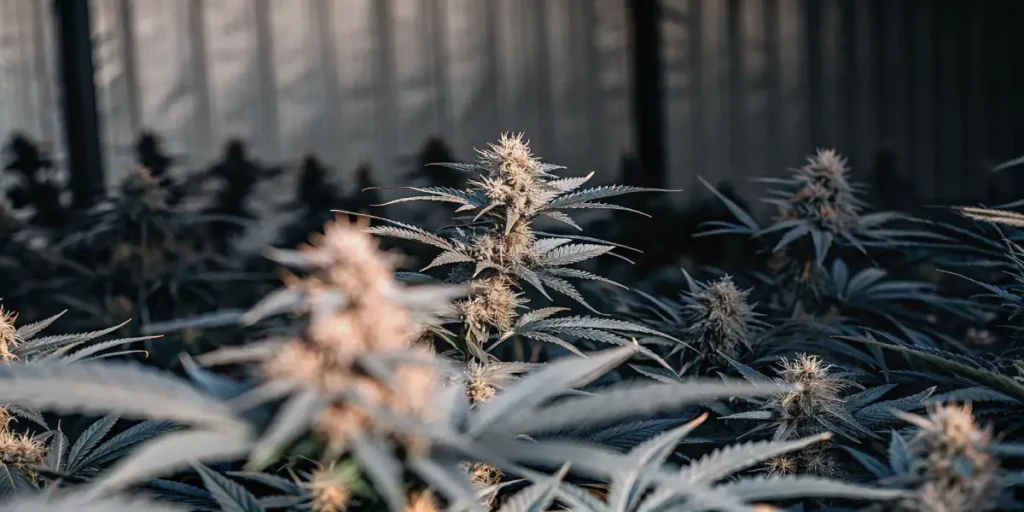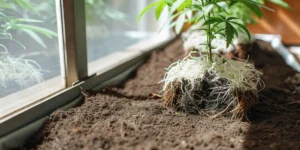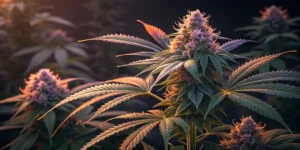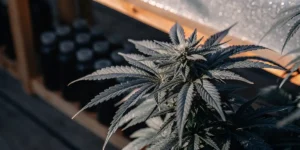Growing cannabis can be a rewarding experience, but it comes with its challenges. One such challenge is dealing with hermie pollen sacs. These sacs are the male reproductive parts found on female cannabis plants. They can be a headache for growers who want to produce high-quality buds.
Sacs can appear when a plant is stressed. Stress factors include light leaks, irregular watering, or even genetic predisposition. Identifying sacs early is crucial to prevent your entire crop from being pollinated. It’s vital to manage these sacs effectively to maintain the quality of your cannabis plants.
For both newbie and veteran growers, knowing how to handle these sacs can make a big difference. Whether you’re growing indoors or outdoors, you want to ensure your plants stay healthy and productive. Let’s dive into the specifics of hermie pollen sacs and how you can effectively manage them in your cannabis garden.
Identifying Hermie Pollen Sacs
Hermie pollen sacs identification is a skill every cannabis grower should develop. These sacs look different from the female flowers you’re used to seeing. They typically appear as small, round balls that may look like tiny bananas.
Spotting these sacs early can save you a lot of trouble. They usually form in clusters and are more noticeable during the early flowering stage. Regular inspection of your plants can help you catch them before they open and release pollen, ensuring you keep your plants seed-free.
Knowing hermie pollen sacs identification can be daunting at first, but with practice, it becomes second nature. Not only does early detection prevent cross-pollination, but it also allows you to address any stress factors promptly. This proactive approach can significantly enhance your overall growing experience.
It’s also helpful to compare new growths with online resources or community forums where experienced growers share images and advice. Engaging with a community can provide additional insights and tips for identifying and dealing with hermie pollen sacs in cannabis plants. This shared knowledge can be invaluable, especially during the early days of cultivation.
Hermie Pollen Sacs vs Female Flowers
It’s easy to confuse hermie pollen sacs with young female flowers, especially if you’re new to growing. Female flowers grow pistils, which look like tiny white hairs, whereas pollen sacs are round and smooth. Knowing the difference can prevent accidental pollination.
Consider examining strains like Gorilla Glue 4 from Global Green Genetics. This strain is popular for its resilience, but even robust strains can develop hermie traits if stressed. Learning to tell the difference between sacs and flowers ensures your efforts aren’t wasted.
Knowing the distinction between pollen sacs vs female flowers is crucial for maintaining a successful crop. Female flowers will eventually develop into the buds that growers seek, while pollen sacs can compromise the plant’s productivity if left unchecked. This awareness is key to ensuring that your plants reach their full potential without unintended pollination.
Inexperienced growers might find it beneficial to keep a visual diary of their plants’ development stages. Documenting these stages helps to build a reference library, making it easier to spot unusual growths and differentiate them from the typical flowering process. Over time, this practice enhances your ability to identify and manage pollen sacs effectively.
How to Remove Hermie Pollen Sacs
When it comes to managing hermie pollen sacs, swift action is essential. If you spot them, it’s crucial to remove them immediately to prevent pollination. This involves carefully pinching off the sacs and disposing of them safely.
Using clean, sanitized tools can help prevent the spread of pollen. For instance, the Blue Dream strain from Global Green Genetics is known for its high yield. Ensuring it remains free of pollen sacs will help you maximize its potential. Be gentle and thorough when removing sacs to avoid damaging your plants.
Knowing how to remove hermie pollen sacs is a critical skill for any cannabis cultivator. By staying vigilant and acting quickly, you can mitigate the risk of pollination, preserving the quality of your harvest. Regular maintenance and attention to detail play a significant role in successful removal.
Additionally, maintaining a clean growing environment can further prevent the spread of pollen. Be sure to dispose of removed sacs far from your cultivation area, and consider using a small vacuum to capture any stray pollen particles. These steps help ensure that your plants remain healthy and free from unintended fertilization.
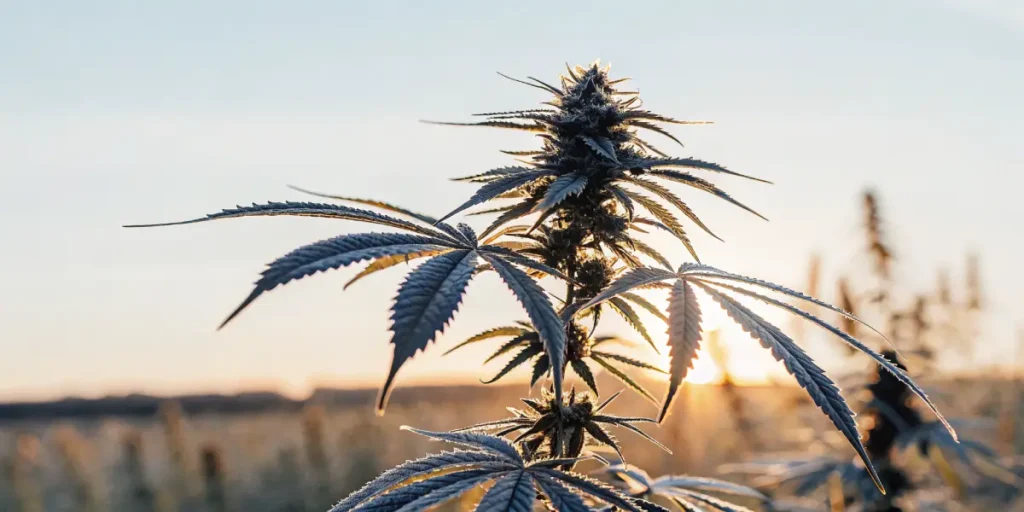
Practical Steps for Removal
To remove hermie pollen sacs, first, identify the areas of the plant where they’re most prevalent. Use a clean pair of tweezers or scissors to gently remove them. Always sanitize your tools before and after use to prevent contamination.
Consider creating a checklist for removal:
- Inspect plants regularly, especially during flowering.
- Identify and mark areas with pollen sacs.
- Use clean tools for removal.
- Dispose of sacs away from your growing area.
Having a systematic approach towards how to remove sacs can make the process more efficient. By developing a routine inspection schedule, you can catch these sacs before they become a bigger issue. This diligence ensures a healthier plant and a more bountiful harvest.
Remember, prevention is the best cure. Keeping stress factors at bay reduces the likelihood of sacs developing. However, if they do appear, swift and careful removal is your best defense against compromised crop quality.
Prevention Tips for Hermie Pollen Sacs
Preventing hermie pollen sacs starts with creating the right environment for your plants. Stress is the biggest trigger, so minimizing it can reduce the risk of hermaphroditism. Ensuring consistent light cycles, proper nutrition, and a stable environment can make a big difference.
Strains like Northern Lights from Global Green Genetics are known for their robustness. However, even hardy strains need care to prevent hermie traits. Maintaining optimal growing conditions can help keep your plants healthy and hermie-free.
Implementing hermie pollen sacs prevention tips is essential for any grower aiming for a high-quality yield. By focusing on environmental control, you can significantly reduce the stress that leads to hermaphroditism. Consistent monitoring and maintenance are key components in prevention.
Keep in mind that even minor fluctuations in temperature or humidity can stress your plants. Regularly check and maintain your grow room settings to create a stable environment. Attention to these details is a proactive step in preventing the emergence of hermie pollen sacs.
Environmental Control and Monitoring
Light control is a significant factor in preventing hermie pollen sacs. Light leaks during the dark cycle can stress your plants, leading to hermaphroditism. Ensure your grow space is sealed from any light intrusion.
Nutrient balance is another key factor. Overfeeding or underfeeding can stress plants, triggering hermie traits. Regularly monitor and adjust your nutrient schedule according to your plants’ needs. Stability in these areas can greatly reduce the risk of hermaphroditism.
Effective environmental control and monitoring are crucial elements in dealing with hermaphroditic traits in cannabis plants. By maintaining a consistent light and nutrient schedule, you can help your plants thrive without the added stress that leads to hermaphroditism. This control is fundamental to a successful grow.
Developing a habit of daily plant inspections also aids in early detection of any potential issues. Observing your plants closely allows you to address stressors promptly, minimizing the risk of hermaphroditic traits forming. This kind of close monitoring is a cornerstone of effective plant management.
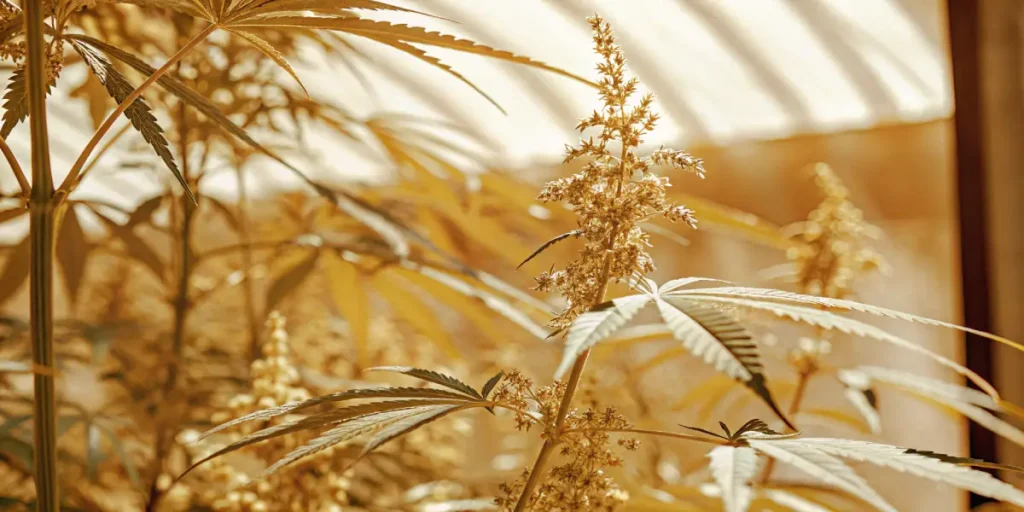
FAQs About Hermie Pollen Sacs
What causes hermie pollen sacs in cannabis plants?
Hermie pollen sacs develop due to stress factors in your growing environment. These can include light leaks during the dark cycle, inconsistent watering, or nutrient imbalances. Even a genetic predisposition in some strains can lead to hermaphroditism.
Managing these factors can help reduce the incidence of hermie pollen sacs. Regular monitoring and adjustments can create a stable environment for your plants, minimizing stress and the likelihood of developing these sacs.
Knowing the causes of hermie pollen sacs can empower growers to take preventative action. By identifying and managing stressors, you can create a more stable environment that discourages the formation of these sacs. This knowledge is crucial for long-term growing success.
Remember, the genetic component is also significant. While you can’t change the plant’s genetics, choosing strains known for stability and resilience can reduce the risk of hermaphroditism. This strategic selection is a preventative measure all growers should consider.
How can I tell if my cannabis plant has hermie pollen sacs?
Hermie pollen sacs are typically round and smooth, resembling tiny bananas or balls. They differ from female flowers, which have white, hair-like pistils. Regular inspection of your plants can help you spot them early.
If you’re unsure, compare the growths to images of known hermie sacs online. With practice, identifying these sacs will become easier, helping you maintain the quality of your crop.
Being able to identify sacs versus female flowers is a skill that can save your crop. Early detection is key, as it allows for timely removal, preventing unwanted pollination. This vigilance is an integral part of effective cannabis cultivation.
For those new to growing, joining online forums or local grow clubs can provide additional resources and support. These communities often share images and tips that can help you become more adept at spotting sacs early in their development.
Are some strains more prone to hermaphroditism?
Yes, some strains have a higher tendency to develop hermaphroditic traits. This is often due to their genetic makeup. However, stable strains like those from Global Green Genetics are bred to minimize these risks.
Even with stable genetics, environmental stress can still trigger hermie traits. Thus, maintaining optimal growing conditions remains essential to prevent hermie pollen sacs.
When selecting strains, consider those with a reputation for stability and resilience, as they are less likely to develop hermie pollen sacs. This choice is a critical step in ensuring a successful and stress-free growing experience.
While genetics play a role, remember that your growing environment is equally important. By combining stable strains with optimal conditions, you create a robust defense against hermaphroditism, enhancing the quality of your harvest.
Can hermie pollen sacs ruin my entire crop?
If not removed promptly, hermie pollen sacs can pollinate female flowers, leading to seed production. This can significantly reduce the quality and quantity of your harvest. It’s crucial to act swiftly to remove these sacs when identified.
Regular plant inspections and immediate removal of sacs can prevent widespread pollination. This diligence helps ensure a high-quality, seed-free harvest.
The presence of hermie pollen sacs poses a serious threat to your crop’s integrity. If left unchecked, they can lead to widespread seed production, adversely affecting both the quality and yield of your cannabis plants. Quick intervention is essential in mitigating this risk.
By developing a routine of regular inspections and immediate action, you can safeguard your plants against the detrimental effects of hermie pollen sacs. This proactive approach is key to maintaining a thriving and productive cannabis garden.
Can I still use the buds from a plant with hermie pollen sacs?
Buds from a plant with hermie pollen sacs can still be used, but they may contain seeds, affecting their quality. The presence of seeds can alter the flavor and potency of the buds.
If you catch and remove the sacs early, you can minimize the impact on your harvest. However, if the plant is heavily seeded, you might consider using it for extracts rather than smoking.
Even if a plant develops hermie pollen sacs, all may not be lost. While seeds can affect the overall quality, early intervention can help limit the damage. This allows you to salvage some of the harvest for use, albeit with adjustments in expectations.
For heavily seeded plants, consider alternative uses such as extracts or concentrates. These methods can still provide value from your crop, even if the smoking quality is compromised. This adaptability is an asset in managing the effects of hermie pollen sacs.

